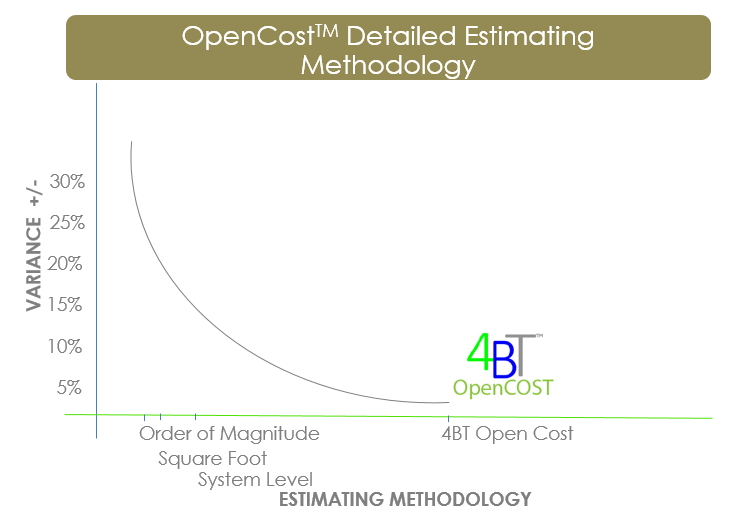Hard Construction Costs are the detailed tasks, materials, equipment, and labor required to complete a renovation, repair, maintenance, sustainability or new construction project.
They are quantifiable and best determined by an experienced construction cost estimator with at least a decade of line item construction cost estimating under his/her belt.
Hard Construction Cost – Issues with Traditional Methods
Contrary to somewhat general opinion the best method for obtaining hard costs is NOT exclusively from subcontractors. There are many pitfalls in simply using past experience and subcontractors for only for generating a hard cost estimate:
- Over time owners/facilities managers generally use the same subcontractors. This may result in “cost creep” as both parties become “too comfortable” in how they general cost proposals and issue work.
- The above can occur even if the owner/facilities manager shifts work around among a group of contracts or regularly solicits the traditional three (3) quote per project. Local contractors tend to know what owners will pay for projects.
- Unless stipulated otherwise by the owner/facilities manager, the contractor(s) /subcontractor(s) generally provide estimates in their own formats and terms. This makes it extremely difficult to accurately understand and compare estimates.
Detailed Line Item Construction Estimates – Apples to Apples
Requiring the use of locally researched detailed unit price book, organized using CSI Masterformat, and noting which line items are modified and not modified provided significant valued to ALL project participants. (Note: Using a so-called “National Average” price books, even if one applies cost factors is not the same a s locally researched price book, and is not recommended. National average price books are far too general. )
Local for a unit price book that is objective, independent, locally researched and has between 50,000 and 75,000 line items which include the below:
- Building Structure– Cost associated with the structure including all labor and material required to complete the whole building or structure. If a buildings, specifically the external shell is key breakdown. Additional categories include mechanical/HVAC, electrical, foundation, interior, etc.
- Site– All site work and underground, aerial, water systems, drains, fire, paving, grading, sewers, etc.
- Landscape – Grass, lawns, trees, mulch, shrubs, fertilizer, and every other material included in the construction of the projects based on the architectural drawings.
- Contingency– Contingency is a reserved amount of money covering all estimated unforeseen conditions that might affect the construction process. Although it is not an amount that you can measure, it can be estimated, and generally ranges between five and twenty percent.
- Overhead & Profit – Temporary facilities, utilities, tools and safety and security costs. What is included in overhead can vary significantly based upon the associate project delivery method and contract.
How to Estimate Hard Construction Costs
Once their is common understand of the scope of work AND a site walk has been conducted, a detailed line item estimate of hard construction costs can be developed that includes all appropriate quantities in term of number of items, labor hours and crew compositions, material quantities and costs, and equipment costs. General conditions are also considered and many or may not be included in the line item estimate based upon contract requirements.
Detailed estimates should provide a variance range of +/- 5% if the project has been clearly communicated and understood by all parties, barring any extenuating circumstances. At this stage, contingency should be in the 0 to 10 percent range.

Learn more…
via Four BT, LLC – Independent, Objective, and Best Value JOC & LEAN Construction Solutions, including locally researched line item cost databases.

